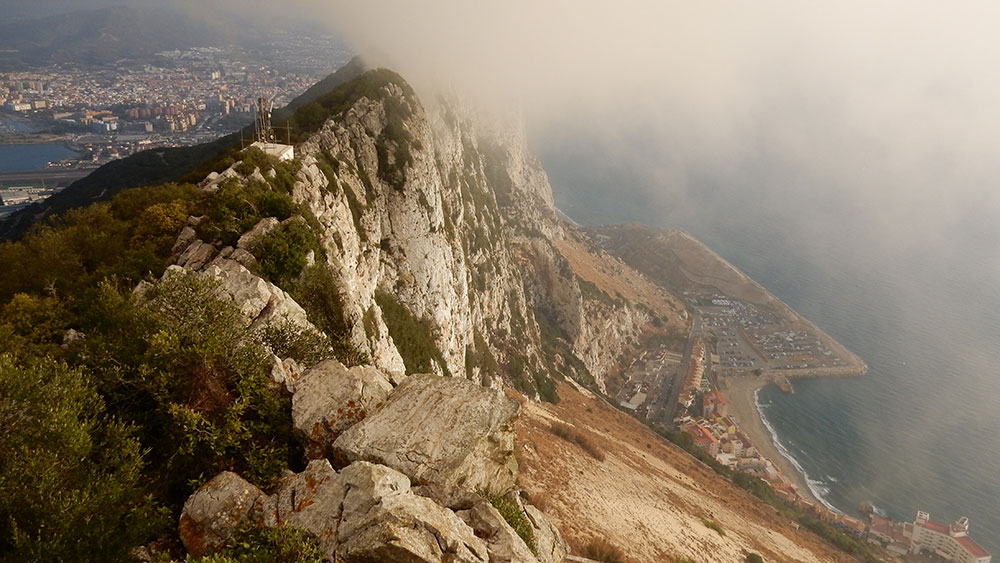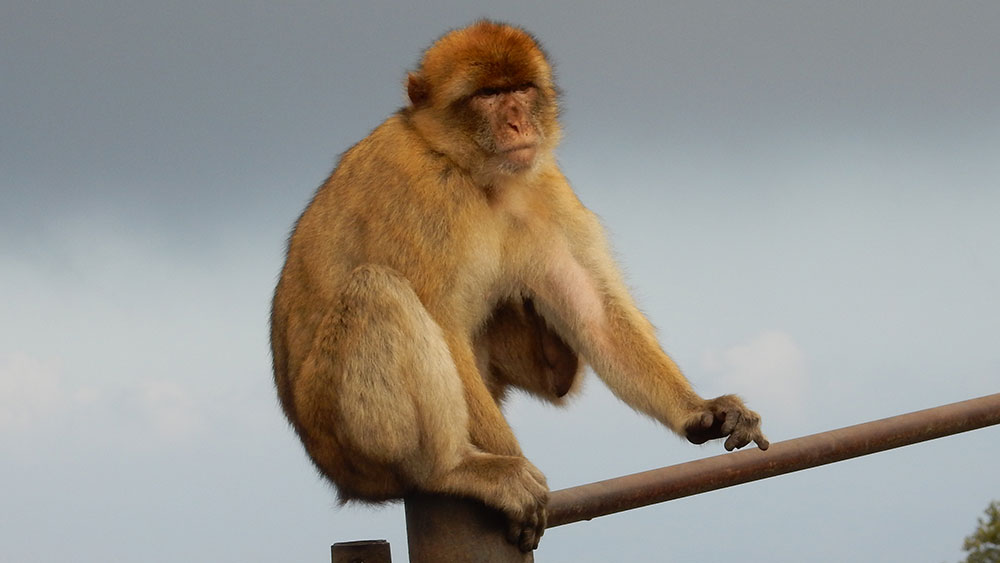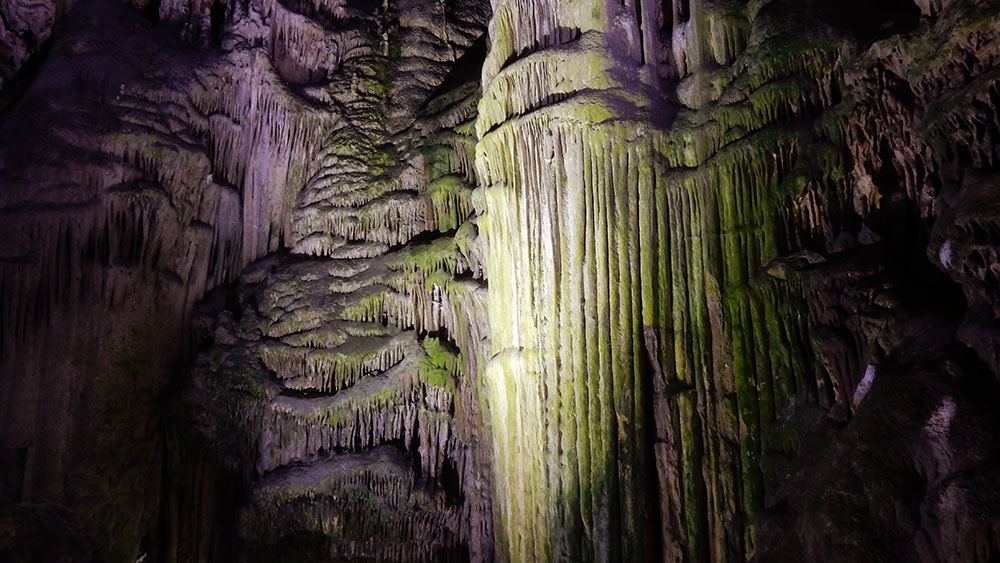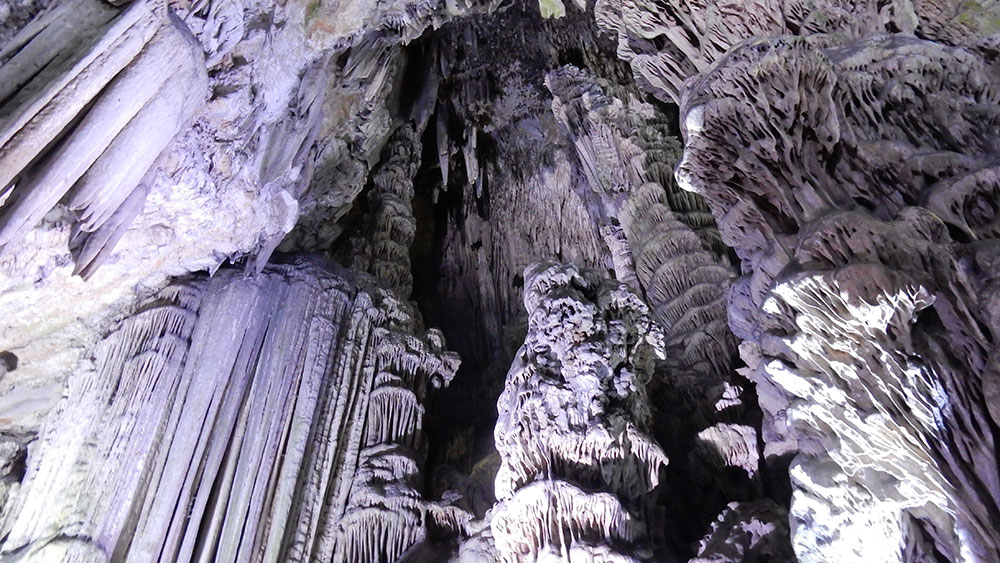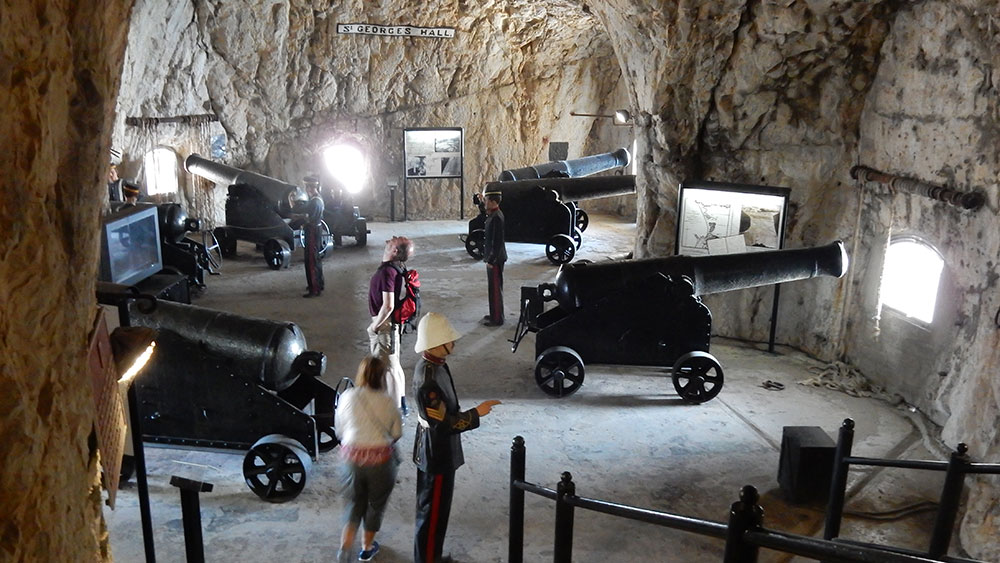The Rock of Gibraltar
Today, we arrived at our penultimate port stop, Gibraltar.
It was an early start; both Tracey and myself were down for escorting duty, and had to be on the quayside for 7:45am. That meant bounding out of bed at 6:45am to get an early breakfast in – not a time we’re used to at all.
The tour we were escorting today was titled ‘Walking Tour – The Upper Rock’, the first leg of which was supposd to be to the cable car. However; because the cable car wasn’t due to open for another 20 minutes, our guide, Karen, decided to have the driver, Johnny, take us around the outer perimeter road that circumnavigates the rock – a nice little bonus to start the tour off with, which also enabled everyone to get some idea of the Rock’s proportions.
When we finally arrived at the cable car station, the ride up to the top of the rock only took 6 minutes. Once there, we had our first encounter with a few of the 300 apes that live on the rock. The Barbery Macaques have been residents here for many hundreds of years, and are protected. It is said that should they ever leave, or be forced to leave, then Gibraltar would cease to remain in British hands.
There are signs everywhere, reminding visitors not to feed the apes. They are wild and untamed, but they are fed regularly by a team who keep an eye on them, monitoring their numbers and tracking their whereabouts. Visitors are also strongly advised to keep food out of sight and any bags or accessories that can easily be snatched, because the apes will make a beeline for them. Touching the apes is also discouraged because you’re likely to get bitten as a result.
After a brief photo stop at a large viewing platform, which provided us with extensive views in all directions, we proceeded to walk along the rock’s ridgeline, past a new glass-bottomed ‘Skywalk’ platform, which was opened relatively recently by Luke Skywalker himeslf (Mark Hammill), to St Michael’s Cave.
St Michael’s Cave is an impressive natural amphitheatre that boasts incredible rock formations and acoustics, making it the setting for many regular concerts. During the Second World War, it was commandeered, and modified for use, as a military hospital, but was never used for that purpose.
I should say at this point that the guide on my minibus was particularly good. As an escort, I have to monitor the tour to make sure that it is as advertised, and write up a short report at the end of it. I’m also asked to grade the guide. Nine times out of ten, if I’m happy with the guide, then I usually put them down as ‘Good’. It’s rare for me to grade them as ‘Excellent’, but Karen did just that. As an ex-naval person herself, her passion for her subject was tangible. Her explanations of historical events that have helped shape the island had the group hanging on her every word – a rare thing indeed, for me (with most guides – even relatively good ones – I often find myself zoning out of what they are saying).
And so it was, at out final stop, as we walked through the Seige tunnels, Karen brought the life and times of the people involved with the digging out of the many tunnels that now exist in the rock, to life.
Gibraltar hasn’t always belonged to the British. It was originally settled on, and inhabited by the Arabs. Since then, it has fallen to the French and the Spanish, and finally to the British. In the Great Siege of 1770, the Spanish tried to take it back, blockading it from all sides, land and sea in an unfair standoff of roughly 5000 British to 50,000 Spanish. For three years, the Spanish sought to take the rock by starving them out, but the British held steadfast, digging tunnels through the rock that enabled them to place cannons more strategically, effectively turning the Rock of Gibraltar into a mighty, impenetrable fortress. I was so swept up in the history of the Rock that I couldn’t help wondering why there has never been a major Hollywood movie made of it… come one Spielberg… Get your finger out!…
All-in-all, this was one of the better tours I’ve been on, and I was pleased to be able to see parts of the Rock that I’ve never seen before. In fact, despite having been to Gibraltar on two previous occasions, this is the first excursion that I’ve done here since my first ever cruise back in 2006, when I visited it on the Saga Ruby (‘Christmas in the Mediterranean’).
It would have been nice to have been able to spend longer there, but it was only a half-day stop, and I had a class this afternoon.
Now, we are back at sea, and heading back towards the Bay of Biscay and our final port-of-call, Cohn, in Ireland, where we are due to arrive on Saturday.

